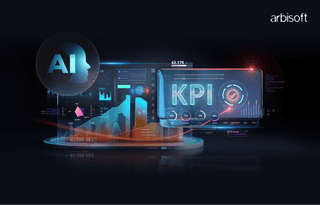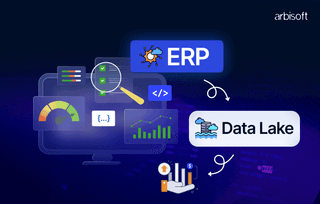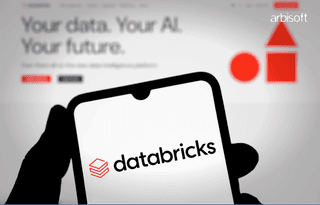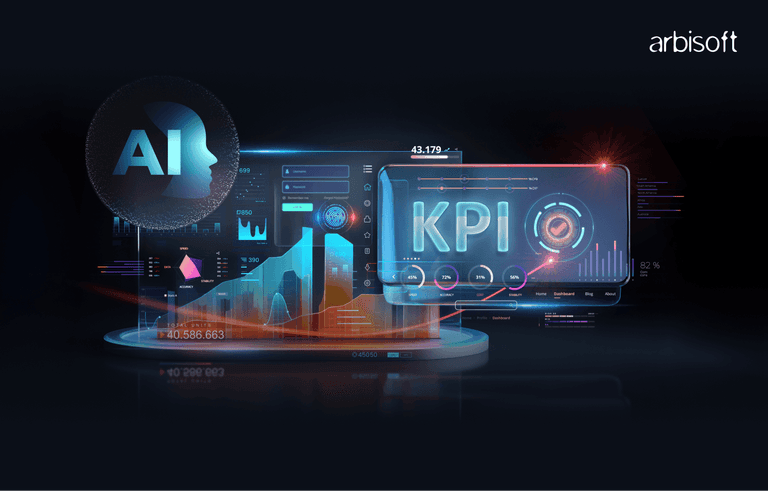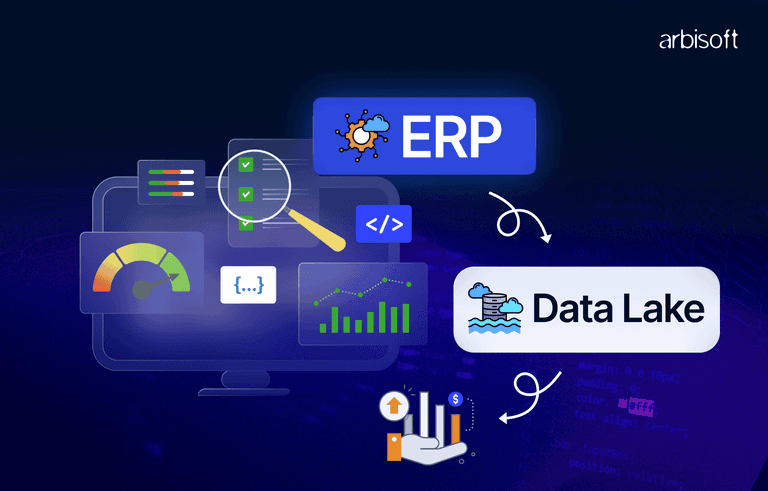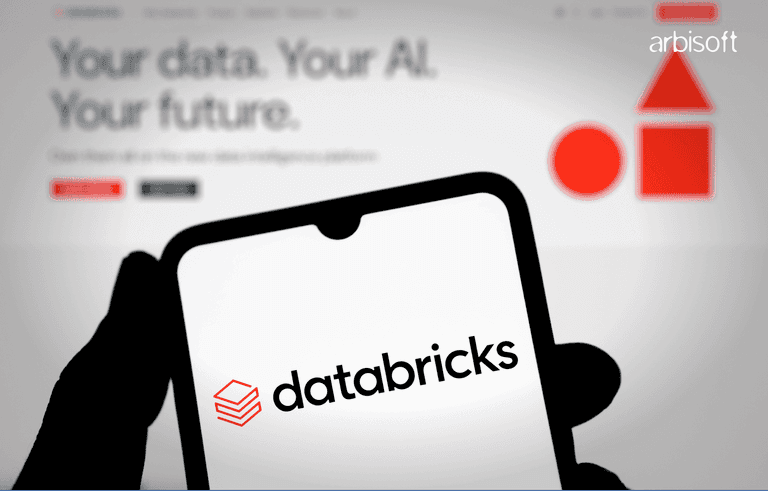We put excellence, value and quality above all - and it shows




A Technology Partnership That Goes Beyond Code

“Arbisoft has been my most trusted technology partner for now over 15 years. Arbisoft has very unique methods of recruiting and training, and the results demonstrate that. They have great teams, great positive attitudes and great communication.”
How to Implement Deep Learning for Personalized Recommendations
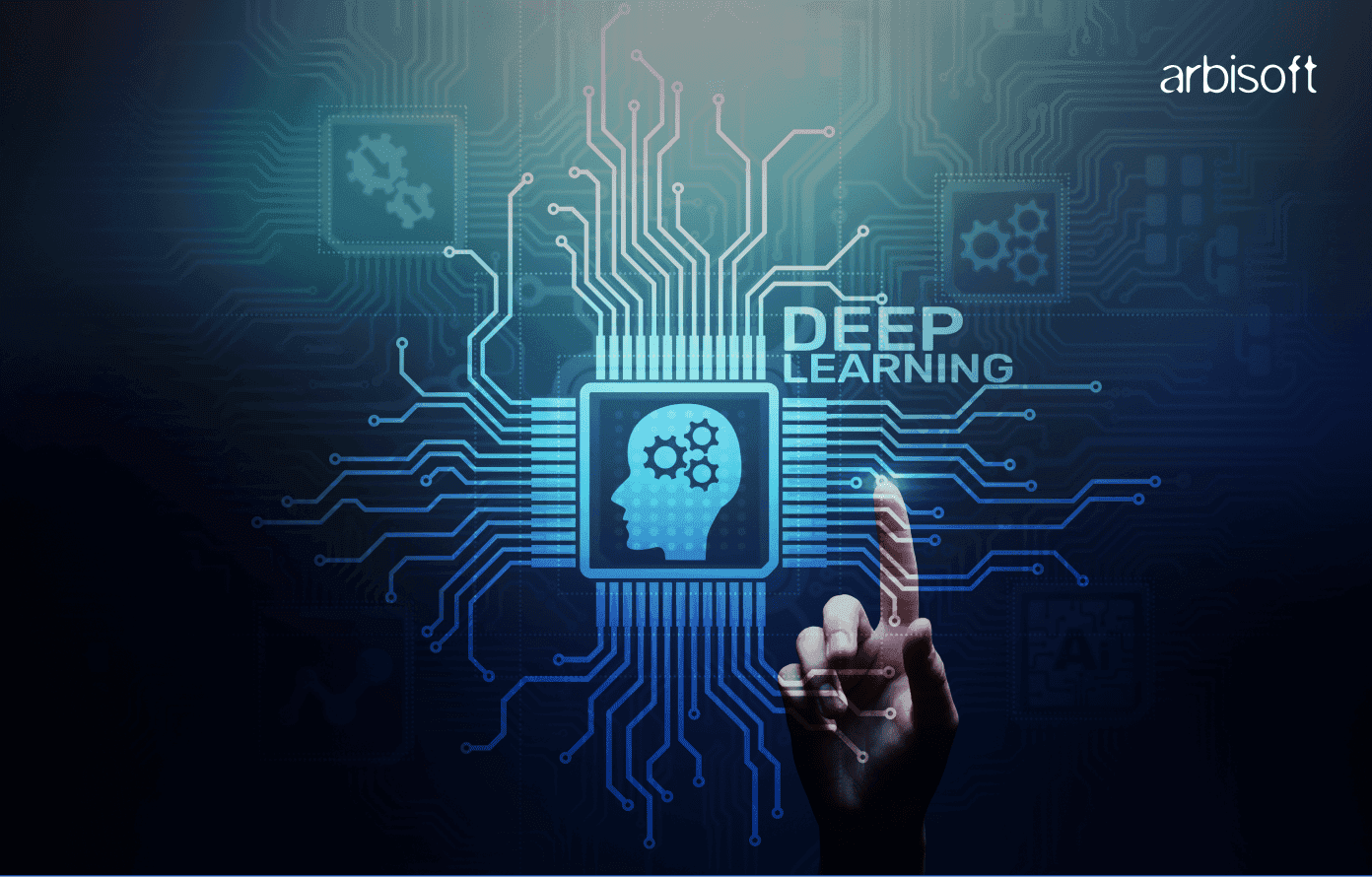
Personalization has become the growth engine behind the world’s most successful digital businesses.
McKinsey found that companies using deep learning for personalization and automation generate around 40% more revenue from these efforts compared to their peers. That’s not a small edge. It’s the difference between being an industry leader and struggling to keep up.
Look at e-commerce. Product recommendations alone drive 25–35% of total sales for top platforms. Amazon’s recommendation system, for example, is credited with influencing more than a third of purchases. For any digital product, that kind of impact is impossible to ignore. And the momentum isn’t slowing down. The global recommendation engine market is on track to hit the multi-billion-dollar mark in 2025, with double-digit growth projected well into the 2030s.
The current users expect relevance at every touchpoint, whether it’s the next show to watch, the product to buy, or the article to read. Market leaders who fail to deliver personalization that feels effortless and accurate risk losing attention, loyalty, and ultimately revenue.
This blog shows you how to get it right, keeping deep learning at the core.
Problem Framing & Business Goals
Before diving into models and infrastructure, the first step is to be clear on what problem your recommendation system is solving and what success looks like.
Define the product scope
Recommendations don’t mean the same thing everywhere. For an e-commerce platform, it could be “similar products” or “customers also bought.” For a video platform, it’s the “next video” in the queue. In a news app, it’s the feed of articles. In advertising, it’s matching the right ad to the right user at the right time. Each scope comes with different data signals, performance requirements, and success metrics.
Pick the right business metrics
This is where most projects go wrong. Most businesses chase offline accuracy scores instead of tying results to outcomes that matter. Market leaders focus on metrics like:
- Revenue lift (direct sales influenced by recommendations).
- Click-through rate (CTR) or engagement rate (how often users interact).
- Retention (do personalized experiences bring users back?).
- DAU → MAU conversion (turning casual users into regulars).
- Average order value (AOV) (are recommendations nudging larger baskets?).
The target depends on the business. For e-commerce, AOV and revenue lift often matter most. For media and social platforms, engagement and retention drive long-term value.
Test and measure impact
Every hypothesis should be validated with controlled experiments. A/B tests help separate real impact from noise. To do this effectively, define your minimum detectable effect (MDE) upfront. For example, if the business needs at least a 3% uplift in revenue per user to justify engineering costs, your A/B design should be powered to detect that.
Get stakeholders aligned early
Personalization touches many parts of the business, so it can’t be an engineering-only project.
- Product managers clarify goals and priorities.
- Legal/privacy teams ensure compliance with regulations and user trust.
- Infrastructure/ML engineers make sure the system is scalable.
- Analytics teams define success metrics and run experiments.
When everyone agrees on the scope, the metrics, and the guardrails, implementation becomes a business growth initiative and not just another ML project.
Data: What You Need and How to Collect It
Deep learning thrives on data. Without the right data signals, even the most advanced models will fail to deliver meaningful personalization. The leaders in e-commerce, media, and social platforms are treating data pipelines as their core competitive advantage and not just an engineering detail.
Start with Interaction Logs
User interactions are the foundation of any recommendation system. Every impression, click, add-to-cart, purchase, dwell time, and video completion tells a story about intent. These signals need to be logged with context, the timestamps, device type, and session IDs. These can connect them back to behavior patterns. Companies like Netflix and YouTube credit their success to analyzing billions of these micro-interactions daily.
Add User Metadata
User profiles help recommendations feel personal. Basic, consented data such as age range, location, or stated preferences can improve accuracy significantly. But here’s the catch: storing sensitive attributes without explicit consent is risky and increasingly restricted by law. With global regulations tightening, consent-driven personalization is becoming the industry norm. According to Gartner, by 2026, over 75% of the world’s population will have their personal data protected under privacy regulations, making transparent consent capture non-negotiable.
Enrich with Item Metadata
Every item in your catalog should come with rich descriptors. Titles, descriptions, categories, prices, images, and even video content can be transformed into embeddings using modern text and vision encoders. This not only solves the cold-start problem for new items but also allows deep learning models to capture semantic relationships. For instance, recognizing that “wireless earbuds” and “Bluetooth headphones” are functionally similar. In industries like fashion and entertainment, multimodal embeddings are already a standard practice.
Don’t Forget Context Signals
What users engage with changes depending on when, where, and how they interact. Time of day, coarse location, referral source, and device type all matter. A user browsing on mobile during a commute behaves differently from one on a desktop at home. Industry leaders use these contextual signals to adapt recommendations dynamically, creating a smoother experience across touchpoints.
Prioritize Data Freshness
Stale data is one of the fastest ways to lose user trust. If your recommendations don’t reflect a user’s latest actions, they’ll feel irrelevant. Modern stacks solve this with near-real-time streams (Kafka, Kinesis, Pulsar) feeding into a feature store, paired with batch pipelines for retraining models overnight. The goal is simple: keep models in sync with fast-changing user behavior.
Privacy from the Start
Every recommendation system must handle privacy with care. Explicit opt-ins should be recorded and stored as part of the user profile, with the ability to withdraw consent at any time. Privacy-preserving techniques like differential privacy and federated learning are no longer experimental; they’re part of mainstream personalization strategies. Early adopters of these methods not only meet compliance requirements but also build user trust as a brand differentiator.
Core Architecture: Retrieval + Ranking
Every high-performing recommendation engine today runs on a two-stage pipeline: retrieval and ranking. It’s the backbone behind what powers Netflix queues, Amazon shopping carousels, and TikTok’s endless feed. If you want scale and speed, this pattern is the standard.
Stage 1: Candidate Generation (retrieval)
At any given time, a user might be choosing from millions of items. The retrieval system’s job is to shrink that universe down to a few hundred strong candidates in milliseconds. This stage is all about recall, catching the widest net of items that could be relevant.
Two-Tower Models:
- Represent users and items in a shared embedding space.
- Ideal for large-scale systems (e.g., TikTok, Amazon).
- Works with approximate nearest neighbor (ANN) search for sub-100ms latency.
Session/Sequence-Based Retrieval:
- Models like SASRec or BERT4Rec predict “next likely item” based on browsing sequences.
- Effective for real-time personalization and short-session engagement.
Graph-Based Retrieval:
- Uses graph neural networks (GNNs) to capture higher-order item-user relationships.
- Powerful for niche discovery, cross-category recommendations, and community-driven content.
Stage 2: Ranking
Once retrieval delivers a shortlist, the ranking stage takes over. Here, the focus shifts from recall to precision. A deep neural ranker scores candidates using rich cross-features: user history, item attributes, and contextual signals.
Deep interaction models:
- Cross-features (user × item × context).
- Multimodal signals (text, image, video embeddings).
- Long-term + short-term history for better balance.
Transformers dominate ranking but require careful engineering to control compute and latency.
Re-ranking & Business Rules:
The “last mile” of recommendation ensures alignment with business and ethical goals:
- Freshness & novelty to keep feeds dynamic.
- Diversity to prevent echo chambers.
- Fairness filters to reduce bias in exposure.
- Revenue-driven constraints like promotions or sponsored content.
Tech in Production:
- ANN libraries like FAISS, ScaNN, and HNSW are the backbone for scalable retrieval.
- Decouple embedding serving from ranking for easier experimentation and faster rollout.
- Sequential models (transformers, RNN hybrids) scale well but need infra optimizations — GPU batching, parameter-efficient tuning, and caching strategies.
72% of users now expect hyper-personalized experiences across apps (Accenture, 2024). Companies using retrieval+ranking hybrid pipelines report 10–30% higher CTR and significant improvements in user retention.
Market leaders are combining multimodal signals (image+video+text) to drive not just clicks but deeper session time and higher AOV (average order value).
Modern Modeling Choices & When to Use Them
The days of “one-size-fits-all” recommender models are gone. The best systems aren’t built on a single algorithm; they are hybrids tuned for context, catalog size, and business goals. From two-tower retrieval engines powering billion-scale platforms to transformer-based models driving next-item predictions, the modeling stack is more diverse than ever.
McKinsey estimates personalization leaders now see up to 40% more revenue growth than competitors who lag behind.
Let’s break down the most widely used modeling choices, their strengths and weaknesses, and where they fit in production systems today.
1. Two-Tower / Dual-Encoder Models (Embedding Retrieval)
- Best for: Large-scale catalogs where speed and recall matter most.
- How it works: Learns embeddings for users and items in a shared space. ANN search finds close matches fast.
- Pros:
- Handles millions to billions of items efficiently.
- Works well with cold-start when enriched with item metadata (titles, descriptions, embeddings).
- Highly scalable with FAISS, ScaNN, or HNSW.
- Cons:
- Limited in modeling fine-grained, session-level interactions.
Needs rich item features for strong cold-start performance.
- Limited in modeling fine-grained, session-level interactions.
- Use Cases: Amazon’s e-commerce search, YouTube retrieval.
2. Sequential / Transformer-Based Recommenders (SASRec, BERT4Rec)
- Best for: Capturing temporal user behavior and session-driven recommendations.
- How it works: Models user interactions as a sequence; predicts the “next likely item.”
- Pros:
- State-of-the-art for next-item prediction and real-time personalization.
- Strong for short-session apps like TikTok, Spotify, or news feeds.
- Cons:
- Expensive at scale; transformers introduce latency.
- Needs optimization tricks (e.g., distillation, pruning, caching).
- Use Cases: Session-based mobile apps, streaming services.
3. Graph Neural Networks (GNNs)
- Best for: Systems where relationships matter — marketplaces, social platforms, item co-purchase graphs.
- How it works: Uses higher-order connectivity (user-user, user-item, item-item).
- Pros:
- Excels at capturing complex relationships and network effects.
- Great for cross-category discovery and community-driven signals.
- Cons:
- Training complexity and inference cost are higher than towers.
- Needs careful engineering to scale beyond millions of nodes.
- Use Cases: LinkedIn people-you-may-know, eBay marketplace recommendations.
4. Contrastive / Self-Supervised Learning (SSL)
- Best for: Data-sparse settings and improving embedding quality without heavy labeling.
- How it works: Learns from patterns in unlabeled interactions (e.g., skip-gram style tasks).
- Pros:
- Boosts cold-start and improves robustness.
- Can be combined with GNNs or sequential models.
- Cons:
- Sensitive to augmentation strategies.
- May not deliver real-time gains without downstream fine-tuning.
- Use Cases: E-commerce catalogs with sparse interaction data, cold-start personalization.
5. Multimodal Recommenders
- Best for: Platforms with rich content, related to fashion, video, music, and social.
- How it works: Combines embeddings from text, images, audio, and video for deeper item understanding.
- Pros:
- Improves recommendation quality and diversity.
- Drives engagement where visuals/aesthetics drive purchase or retention.
- Cons:
- Costly to store and serve multimodal embeddings.
- Needs feature alignment (e.g., text vs. image embeddings).
- Use Cases: Instagram Reels, Pinterest, Netflix thumbnails.
6. LLMs / Retrieval-Augmented Recommendation
- Best for: Emerging use cases where explanations and reasoning add value.
- How it works: Uses LLMs to reason over user context, generate candidate explanations, or support conversational recommendations.
- Pros:
- Adds explainability and natural-language interaction.
- Can integrate with structured retrieval (hybrid ANN+LLM).
- Cons:
- Latency and cost remain barriers for real-time feeds.
- Limited evidence of production-scale deployment today.
- Use Cases: Conversational shopping assistants, enterprise knowledge recommenders.
Quick Decision Guide
- Catalogs with millions of items? → Start with two-tower + ANN for retrieval, pair with a lightweight ranker.
- Session-based mobile app? → Use transformer-based sequential models for session predictions, with a fallback ANN for cold-start.
- Content-rich platforms? → Combine multimodal embeddings + GNNs for retrieval and re-ranking, backed by a deep ranker.
- Cold-start challenges? → Layer in contrastive or self-supervised learning.
- Conversational experiences? → Experiment with LLM-augmented retrieval but hybridize for scale.
Personalization Strategies
Getting a model to work in the lab is one thing. Turning it into a product that balances growth, fairness, and trust is where market leaders set themselves apart. Personalization is now a baseline expectation, and 71% of consumers expect companies to deliver it, and 76% feel frustrated when it’s missing. Now, the competitive edge lies in how intelligently you deploy personalization strategies at scale.
Here are the key approaches shaping successful systems today:
Exploration vs. Exploitation
Don’t just push what’s popular. Balancing novelty with relevance keeps users engaged long-term. Contextual bandits like Thompson sampling or epsilon-greedy approaches let you safely explore new items while still optimizing for conversion.
Diversity & Fairness Constraints
Leading platforms now enforce catalog diversity and fairness rules. This avoids over-promoting a narrow slice of items and ensures equitable exposure. Constrained optimization techniques make sure business goals and user trust go hand in hand.
Segmentation & Hybrid Experiences
A single global model often isn’t enough. Combining it with per-segment personalization. For instance, tailoring by region, price sensitivity, or content preferences can unlock significant uplift. Hybrid setups balance scale with contextual relevance.
Explainability & Transparency
Simple explanations like “Because you watched X” or “Recommended for your style” can boost engagement by 10–15% (RecSys 2023). More importantly, they build trust, which is a critical factor as users become more aware of how algorithms shape their choices.
Implementation Checklist & Tech Stack Suggestions
Building a recommendation system that actually scales in production isn’t just about choosing the right model. It’s about putting together a robust, flexible team, and a future-ready tech stack. Now, the best systems are modular, which makes it easy to evolve as data grows, models advance, and business priorities shift. Here’s a checklist that leading teams use:
- Data Layer
- Use Kafka or Kinesis for near real-time event streaming.
- Pair with BigQuery, Redshift, or Snowflake for analytics.
- Store interaction logs and metadata in columnar formats like Parquet for efficient retrieval.
- Feature Store
- Centralize features in Feast or Hopsworks to ensure consistency across training and serving.
- This reduces leakage risks and accelerates iteration cycles.
- Model Training
- PyTorch Lightning and TensorFlow Keras remain the industry standards.
- For embeddings, tap into Hugging Face transformers for text, image, and multimodal data.
- Distributed training by optimizing for GPU clusters or cloud TPUs.
- ANN & Embedding Store
- For candidate retrieval at scale, rely on FAISS, ScaNN, Milvus, or Vespa.
- These are optimized for billion-scale embedding searches with millisecond latency.
- Serving Layer
- Options like KFServing, TorchServe, or Seldon streamline model deployment.
- Custom gRPC APIs are still popular for low-latency, high-throughput use cases.
- Monitoring & Reliability
- Track infrastructure health with Prometheus + Grafana.
- Don’t stop at system metrics, enforce SLOs for business outcomes like CTR, conversion, and retention.
- MLOps Practices
- Treat recommendation pipelines as living systems.
- Use CI/CD, MLflow for model registry, and canary releases to ship safely and often.
In the End
Personalization is the growth engine that separates industry leaders from the rest. With deep learning, you’re not just recommending products or content; you’re shaping customer journeys in real time.
The trendsetters will be those who treat personalization as a core business strategy, not just an ML experiment. That means aligning stakeholders early, investing in fresh and consent-driven data pipelines, and building modular stacks that evolve with new models and market needs.
Every percentage point of lift matters. A 3% boost in CTR or AOV can translate into millions in annual revenue at scale. And with 72% of users expecting hyper-personalized experiences, failing to deliver means leaving both growth and loyalty on the table.
To do it right, frame the problem, collect the right data, build retrieval+ranking pipelines, choose the right models, and embed fairness, explainability, and trust into the experience. The technology is ready. The market is ready. The only question is: is your organization ready to lead?








